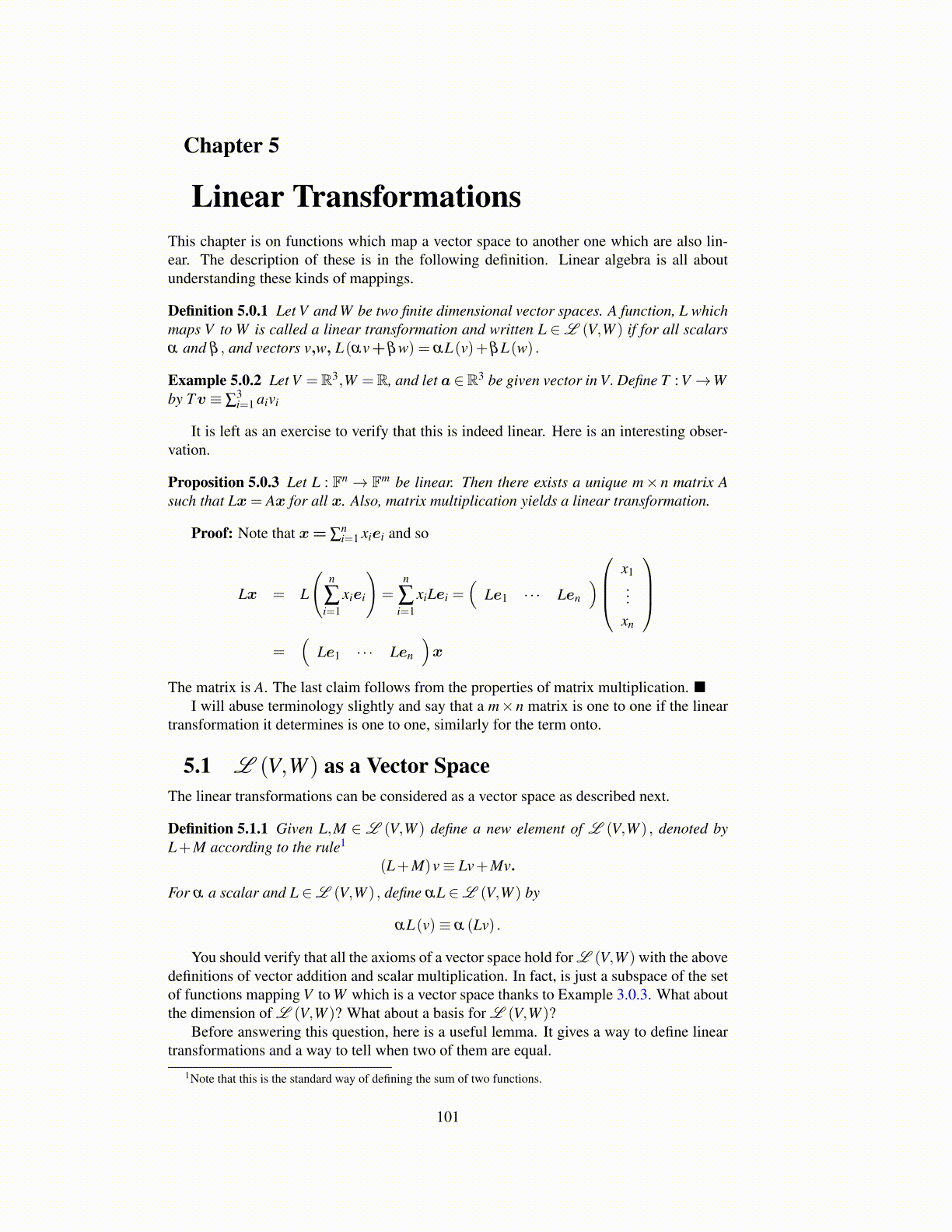
Chapter 5
Linear TransformationsThis chapter is on functions which map a vector space to another one which are also lin-ear. The description of these is in the following definition. Linear algebra is all aboutunderstanding these kinds of mappings.
Definition 5.0.1 Let V and W be two finite dimensional vector spaces. A function, L whichmaps V to W is called a linear transformation and written L ∈L (V,W ) if for all scalarsα and β , and vectors v,w, L(αv+βw) = αL(v)+βL(w) .
Example 5.0.2 Let V =R3,W =R, and let a∈R3 be given vector in V. Define T : V →Wby Tv ≡ ∑
3i=1 aivi
It is left as an exercise to verify that this is indeed linear. Here is an interesting obser-vation.
Proposition 5.0.3 Let L : Fn → Fm be linear. Then there exists a unique m× n matrix Asuch that Lx= Ax for all x. Also, matrix multiplication yields a linear transformation.
Proof: Note that x= ∑ni=1 xiei and so
Lx = L
(n
∑i=1
xiei
)=
n
∑i=1
xiLei =(
Le1 · · · Len
)x1...
xn
=
(Le1 · · · Len
)x
The matrix is A. The last claim follows from the properties of matrix multiplication. ■I will abuse terminology slightly and say that a m×n matrix is one to one if the linear
transformation it determines is one to one, similarly for the term onto.
5.1 L (V,W ) as a Vector SpaceThe linear transformations can be considered as a vector space as described next.
Definition 5.1.1 Given L,M ∈ L (V,W ) define a new element of L (V,W ) , denoted byL+M according to the rule1
(L+M)v≡ Lv+Mv.
For α a scalar and L ∈L (V,W ) , define αL ∈L (V,W ) by
αL(v)≡ α (Lv) .
You should verify that all the axioms of a vector space hold for L (V,W ) with the abovedefinitions of vector addition and scalar multiplication. In fact, is just a subspace of the setof functions mapping V to W which is a vector space thanks to Example 3.0.3. What aboutthe dimension of L (V,W )? What about a basis for L (V,W )?
Before answering this question, here is a useful lemma. It gives a way to define lineartransformations and a way to tell when two of them are equal.
1Note that this is the standard way of defining the sum of two functions.
101